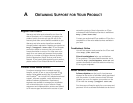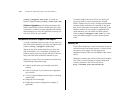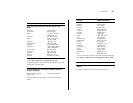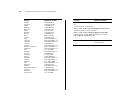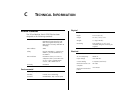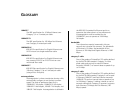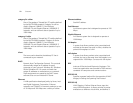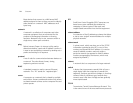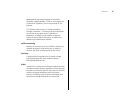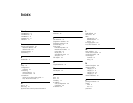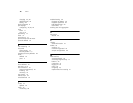
GLOSSARY
10BASE-T
The IEEE specification for 10 Mbps Ethernet over
Category 3, 4 or 5 twisted pair cable.
100BASE-TX
The IEEE specification for 100 Mbps Fast Ethernet
over Category 5 twisted-pair cable.
1000BASE-LX
IEEE 802.3z specification for Gigabit Ethernet over
9/125 micron core single-mode fiber cable.
1000BASE-SX
IEEE 802.3z specification for Gigabit Ethernet over
two strands of 50/125 or 62.5/125 micron core
multimode fiber cable.
1000BASE-T
IEEE 802.3ab specification for Gigabit Ethernet over
100-ohm Category 5, 5e or 6 twisted-pair cable
(using all four wire pairs).
autonegotiation
Autonegotiation is where two devices sharing a link,
automatically configure to use the best common
speed. The order of preference (best first) is:
1000BASE-T full-duplex, 100BASE-TX full-duplex,
100BASE-TX half-duplex, 10BASE-T full-duplex, and
10BASE-T half-duplex. Autonegotiation is defined in
the IEEE 802.3 standard for Ethernet and is an
operation that takes place in a few milliseconds.
Autonegotiation must be enabled for the
1000BASE-T ports to operate at 1000 Mbps,
full-duplex.
bandwidth
The information capacity (measured in bits per
second) that a channel can transmit. The bandwidth
of Ethernet is 10 Mbps, the bandwidth of Fast
Ethernet is 100 Mbps and Gigabit Ethernet is 1000
Mbps.
category 3 cable
One of five grades of Twisted Pair (TP) cabling defined
by the EIA/TIA-568 standard. Category 3 is voice
grade cable and can only be used in Ethernet
networks (10BASE-T) to transmit data at speeds of up
to 10 Mbps.
category 5 cable
One of five grades of Twisted Pair (TP) cabling defined
by the EIA/TIA-568 standard. Category 5 can be used
in Ethernet (10BASE-T) and Fast Ethernet networks
(100BASE-TX) and can transmit data at speeds of up
to 100 Mbps. Category 5 cabling is better to use for
network cabling than Category 3, because it supports
both Ethernet (10 Mbps) and Fast Ethernet (100
Mbps) speeds.



